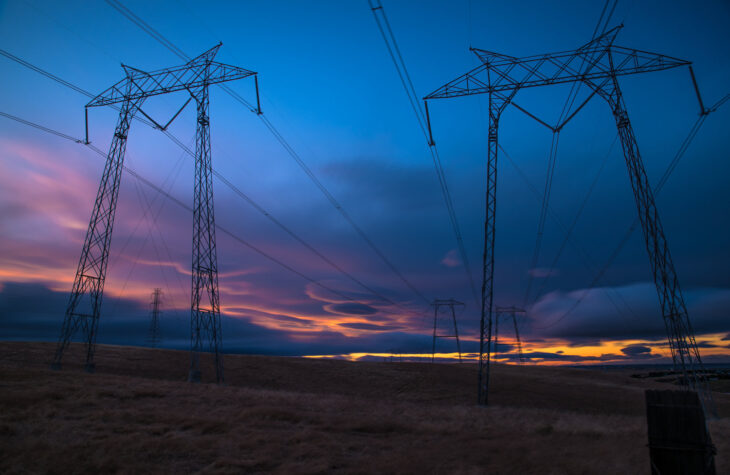
Primer: An “All of the Above” Energy Approach is Crippling America
Summary
Over the last several decades, the United States has increasingly moved away from proven sources of energy like oil, natural gas, and coal toward so-called “renewable” energy. Institutional and political pressures from climate change activists in the media, academia, and culture–with policies enacted by their political allies–have advanced these “green” mandates and taxpayer-backed subsidies for wind, solar, and biofuel-based sources of power in a bid to reduce carbon emissions.
In response to this largely political effort to erase petroleum-based and other reliable forms of energy, many policymakers have adopted an “all of the above” mantra intended to signal support for all forms of energy: both traditional oil, gas, and coal as well as the climate change lobby’s zeal for wind and solar-powered energy. The result of the “all of the above” compromise position has been a steady increase in renewable power generation, a decrease in reliable energy generation, rising consumer costs, an inability to keep up with energy demand, and wavering stability for America’s energy grid.
Put another way, then-candidate Joe Biden, in 2019 – just five years after the Obama-Biden administration touted support for an “all of the above” energy approach – promised he would “end fossil fuel.”
Background
The role that energy plays in the lives of every individual, family, and community cannot be overstated. Simply put, energy is the essential resource that powers our very existence. It is the lifeblood of not just the U.S. economy, but every nation’s economy, and its impact is felt on both a personal and global scale.
Whether it’s the flick of a switch to prepare the first cup of morning coffee, the synthetic fabric that keeps the latest athletic gear durable and comfortable, the daily commute needed to put food on the family dinner table, the life-saving machinery in a hospital NICU, or the burst necessary to propel a fighter jet into the atmosphere, energy is what keeps modern society running and thriving.
Specifically, it is the petroleum-based and traditional sources of energy that have built our way of life and fueled much of the innovation that has helped reduce poverty and improve the quality of life for billions of people. Oil, coal, and natural gas account for 80 percent of all energy consumption in the United States and 84 percent of all energy consumption on the planet. However, the composition and production of American energy have undergone a significant domestic shift largely due to policies implemented at both the federal and state level.
The political debate surrounding U.S. energy policy has become directly linked to the issue of global warming–reframed as ‘climate change’ by institutions and academics on the left–as a means of defaming existing energy production and consumption as harmful and therefore justifying the drastic, whole of society reordering by government dictate.
The proposed remedy offered by progressives is “clean” and “renewable energy.” Specifically, clean energy is a euphemism in favor of wind and solar-powered energy and in opposition to traditional sources such as coal and natural gas. The emphasis by institutions, activists, and progressive policymakers to reduce carbon emissions to “save the planet” helped popularize a political slogan from supporters of traditional energy sources known as an “all of the above” energy approach.
The purpose of the “all of the above” mantra, particularly from the political right, was to reassure Americans that traditional, reliable sources of energy like oil and natural gas would not be suddenly replaced with unreliable, unaffordable, and untested renewables. The mantra, later adopted by proponents of renewables, signaled to climate change activists that their preferred sources of energy would become an official–and growing–part of America’s energy infrastructure.
However, the signing of the Paris Climate Agreement by President Obama in 2015, which called all signatories to achieve “net-zero” emissions by 2050, officially unmasked “all of the above” as little more than a ruse intended to deceive the public to embrace a centrally-planned economy devoid of the very energy sources that built our civilization.
Unaffordable Energy
The increasing use of renewable sources of energy like solar and wind has played a significant role in the rising cost of energy for working Americans and families. California serves as both a case study and cautionary tale.
In 2018, former Governor Jerry Brown announced that California would enact policies ensuring “net-zero” carbon emissions by 2045 and signed legislation mandating California hit those metrics by immediately ramping up renewable capacity and generation. In April 2022, Governor Gavin Newsom’s Air Resources Board intensified the renewable push through proposed regulatory guidance to prohibit the sale of any vehicle in California that runs on “fossil fuels” by 2035.
The results of this artificial and politically-driven energy transformation project have already proven disastrous. According to the Energy Information Agency (EIA), residential energy prices in California saw an annual increase of 11.7 percent in 2021 at the same time climate change advocates in the press cheered on the state’s destructive drive toward total renewable energy reliance. On average, Californians are now paying about 66 percent more for electricity than homeowners in other states. And the impacts of these green energy policies are devastating lower-income households and families with even more pain looming just ahead.
The California Public Utilities Commission unanimously greenlit a project to add 40 gigawatts of renewables and batteries to the state’s grid within the next decade. At the same time, the state’s grid operator released a plan to upgrade California’s transmission lines. The total cost of those two clean energy projects will be more than $80 billion or about $2,100 in added costs per California resident over the next decade. This estimate does not take record inflation, blackouts, or unforeseen operational costs into account.
In 2019, over 400 mayors announced their intent to implement local energy policies in accordance with the mandates and metrics outlined in the Paris Climate Agreement. One of those cities, San Antonio, unveiled a Climate Action and Adaptation Plan (CAAP) to reach the “net-zero” emissions standard by 2050. The cost for San Antonio residents is staggering.
An extensive analysis compiled by the Texas Public Policy Foundation found that in order to achieve 100 percent energy generation from solar and wind power, San Antonio would have to utilize more than 700,000 acres just to install the solar panels, the wind turbines, and implement the transmission lines necessary to keep the lights on in the city. This is a landmass that is 2.5 times the size of San Antonio and roughly 10 times the amount of land currently utilized to power the city’s energy grid through far less costly, more efficient sources of energy like natural gas and coal.
Furthermore, the cost increase for every resident of San Antonio, if achieved under the best-case scenario, would be at least $1,000 per year. This assumes an annual inflation rate of just two percent (at the time of this paper’s publication, year-over-year inflation is currently 8.3 percent) and does not take into account operations costs or taxes to the city needed to build and maintain this new infrastructure.
In reality, San Antonio’s local “Green New Deal” would mean every household would pay many thousands more each year just to plug in a refrigerator, operate the air conditioner, watch television, or read a book in one’s living room. According to the latest 2020 data from the U.S. Census Bureau, the median household income in San Antonio is currently $53,420. In 1990, median household income in San Antonio was right at $30,000, meaning that households in the area have experienced a 78 percent increase in median income over the last 30 years of relatively steady economic growth and low inflation.
Over the next 30 years, when San Antonio’s green energy central planners seek to become a “net-zero” emissions city that completely abandons traditional and reliable energy, the median household income will need to be $95,087 just to remain static assuming a comparable period of relatively low inflation and steady economic growth. Such assumptions are bold, to say the least.
In Georgetown, Texas, much ado was made in 2015 about the city’s plan to become one of the first “100 percent renewable” towns in America with media outlets touting the city as “leading the way” into a more sustainable future. In 2017, local officials said their decision to move away from traditional energy sources would save money and cut energy costs. Two years later, the monthly utility cost of an average home in Georgetown increased 22 percent. Now the city is desperate to pivot away from its renewable utility contracts as its residents experienced the predictable financial pain.
The “all of the above” approach is resulting in poverty and pain for America’s working men and women–as well as those least able to pay the increased costs.
Unreliable Energy
Aside from the exorbitant cost stemming from the adoption of “all of the above” renewables, solar and wind are notorious for their lack of reliability for consumers. A frequent critique is that when the sun is not shining and the wind is not blowing, renewable energy generation–and the homes and communities it is supposed to power–suffers.
A recent example of this happened in February 2021 in Texas during a once-in-a-generation arctic storm that caused widespread power failures and came within minutes of causing a total collapse of the state power grid. Renewable energy activists quickly blamed the state’s power failures on “fossil fuels,” highlighting that Texas is the largest oil-producing state in the nation and still overwhelmingly relies on natural gas for its power generation.
However, Texas adopted an “all of the above” energy approach in the early 2000s. By 2020, wind energy comprised over 20 percent of the state’s total power generating capacity, according to official figures from the EIA. Indeed, from 2000 to 2014, wind energy capacity in Texas increased a staggering 9,383 percent, but not without state policies subsidizing the development of wind energy farms.
During the February 2021 arctic storm, the state’s reserve margin, which is a supply buffer in the advent of severe weather, collapsed. Before the move to “all of the above,” margins had been backed up by natural gas and coal. Two decades of poor decision-making saw the reserve margins increasingly rely on sources of energy that simply do not work when the sun is not shining or the wind is not blowing.
The buffer failed. And that renewable reliance started a chain reaction that left four million Texans freezing and without power in what was an all-too-predictable grid disaster. This disaster could have been avoided through a combination of weatherization and avoidance of a green energy ruse that knocked down even an energy powerhouse like Texas.
However, severe weather events and the power failures that stem from over-reliance on renewables have not deterred “all of the above” proponents and climate change activists from touting the need for even more green energy. Indeed, climate change proponents have emphasized that the number of power outages from severe weather incidents in the United States has doubled since 2002. According to data submitted by utility companies to the U.S. Department of Energy, annual outages from severe weather now number more than 100 per year compared to just 50 outages per year in the early 2000s. Americans should be alarmed, not by volatile weather patterns, but by policies that increase our dependence on unreliable energy sources.
So-called “renewables” now serve as the second most prevalent source of power generation, despite lacking the long-term storage capacity of a resource such as coal. Federal subsidy programs like the Wind Production Tax Credit (PTC) have artificially pushed wind energy from 0.3 percent of total power generation in 2002 to 9.2 percent of total power generation in 2021–an increase of 2,967 percent in just two decades. Is it merely a coincidence that major energy disruptions to the grid are up nearly 700 percent in that same time frame that the United States has come to rely so heavily on renewables?
Such data points continue to underscore the reliability challenges that renewables pose as well as the flawed “all of the above” mantra of policymakers and elected officials who seek to please both the climate change lobby and the working Americans who bear the cost and pain of such policies.
Concluding Assessment
American workers and families need affordable, reliable, and sustainable forms of energy. The adoption of “all of the above” as a policy apparatus for America’s energy needs has jeopardized the integrity of the grid and increased costs through the artificial imposition of energy sources that are unproven and inherently weaker than traditional sources of energy. This political slogan is designed to generate an impression of practicality that is simply not reflective of the real-world harm that renewable energy has on the affordability, reliability, and sustainability needed to power people’s lives and power our civilization.
It is past time to abandon “all of the above” as both a policy and slogan and reembrace reliable and abundant sources of energy through coal, oil, and natural gas.



